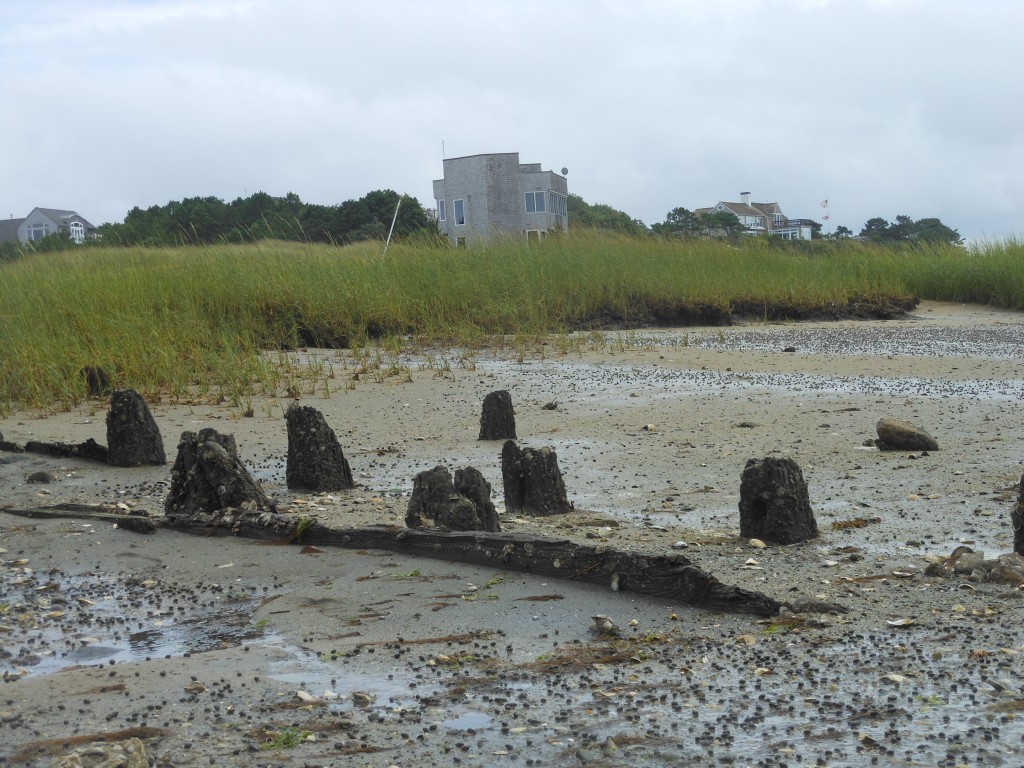Exploring Local History: South Wellfleet

by Pam Tice
All my life, summers were spent in South Wellfleet, in a cottage built by my great-grandfather in 1915.
As I shed career responsibilities, I’d planned to write down the story of how our family came to be summer residents there. A history major in college, for the past ten years I’d worked on family history, joining many who find pleasure in discovering their roots.
Using those genealogical skills, I found myself digging back through the layers of South Wellfleet history – and I found a way to share my findings by writing a blog.
Local history holds a great attraction — you don’t need to be a professional historian.
Curiosity will get you started: Who lived here before? How did they earn a living and feed themselves? How did they engage with each other, and where? What were their concerns? How did they view the world?
The history of much of the Cape is well-documented as it is one of the oldest parts of New England. Historians have had years of discovery, including the old records of the towns.
But the Outer Cape has a certain isolation, as its heyday was before the Civil War, and then it subsided into a back-water status until tourism developed in the early twentieth century.
That sweep of Cape history affected my particular area of interest, the five miles surrounding the old family cottage, on Blackfish Creek.
As I started my exploration, I found many helpful historical resources. These included the libraries that held historical materials, online databases of records and newspapers, earlier writers, and local historical societies.
Information did not develop linearly: there were scraps of information that would be knit together later. Just keeping these scraps in some orderly fashion proved to be a challenge. Posting blog pieces allowed me to add newly discovered facts when I found them, or to correct something written earlier.
Close to my cottage, the “Old Wharf” was an early subject for research. That name came much later, as the activities of the nineteenth century gave way to naming it “old” by the twentieth.
I learned how the South Wharf was built, the human activities there, and the importance of the mackerel migration every spring.
Later, came the settlement of a summer colony and discovering how one resident took advantage of its location to actively participate in the rum-running of the nineteen twenties. My elderly aunt’s story of watching mysterious nighttime lights from the cottage’s attic window was proven true.
This point of land at the head of Blackfish Creek had been named “Brier’s Cliff” at one point, and the whole area “Edmund’s Island.” These are old place-names written in deeds, suggesting previous owners.
The salt marshes around the land had been bought and sold from the beginning of European settlement on the Outer Cape.
Salt Hay was a “free food” source for cattle, and harvesting the grass was a skill the early settlers quickly learned.
Those who left the Cape and drank their milk elsewhere missed the salty taste.
The Cape soils were limited in their ability to produce large harvests, but the waters surrounding the Cape were teeming with fish, and shellfish could be dug at low tide.
The families who came to the Outer Cape from Plymouth Colony expected to be farmers, not fishermen, and so had to learn and organize their fishing, often helped by the native people.
Food supplies were increased with small garden plots. Some grains were grown, especially corn, or could be secured through trading fish.
Early on, small whales were herded ashore and their blubber boiled on the beaches to make oil to light the local lamps, and a product that was sold for other goods. Wellfleet families were established, with many descendants inhabiting the town today.
In Wellfleet, by the early in the nineteenth century, mackerel came to rule. The town’s whale fleet had been destroyed during the Revolution, when the British closed off the Cape Cod harbors.
Fishermen learned that the mackerel traveled north in the early spring, providing a fishing season from April to October. Schooners were built that could handle a crew of twenty and storage for 200 barrels of fish, which were found in great numbers off Maine and Canada.
Wives waited, tending the garden, while fishermen went off for three and four weeks at a time. In the off-season, the schooners headed south to bring oyster seed to the flats to grow and develop the unique Wellfleet flavor.
As Wellfleet’s mackerel fleet grew, more wharves were needed to handle the fleet. By the early 1830s, the South Wharf was built by investors from Boston. Local men with schooners named Catherine, Blossom, and Chariot began to fish from there.
South Wellfleet became its own little village with churches, a graveyard, a stage coach stop, a tavern, and its own postmaster. Population of the area swelled, and a school was established. The residents welcomed Methodists holding summer “camp meetings” providing a communal religious experience.
By the 1870s, the mackerel years were drawing to a close as the silvery fish diminished. The schooners had grown in size, and could no longer be brought in and out of the South Wharf, as the bay silted up from the washing of sand into its waters.
Children of the local families began to move to Boston, many becoming fish dealers.
Nevertheless there was hope as a second life for the Outer Cape began to develop.
First, the train came in the 1870s. Early on, it brought the fish, shellfish, and locally grown vegetables to market.
Later, as city dwellers began to seek a brief respite from the rigors of work and urban life, the Outer Cape became a destination for a few weeks of living by the sea and enjoying the summer air.
Artists found inspiration in its wondrous light and writers found a quiet retreat.
Real estate developers began to buy up tracts of land – initially on the bay side – laying out “handkerchief lots” that city people could buy for a reasonable amount, putting up their cottages, or even tenting for a while until a cottage could be built.
The Outer Cape attracted a rising middle class, desiring no great shingled cottage-mansions like those in Newport and Nantucket.
The South Wharf became the Old Wharf, and the early buyers built homes overlooking the bay.
They settled into a summer season of swimming, boating, digging clams, and providing jobs to the locals, who built and repaired their homes, dug wells, supplied food, and drove them to and from the train station in their wagons.
During Prohibition, a local owner on the Old Wharf who owned a fast boat and a truck, went out to the supply ships off the coast and picked up the burlap bags full of liquor, taking them to the distribution centers of Hyannis and Fall River.
Everyone looked the other way, and were happy to have a bottle or two, no doubt, to keep their mouths shut.
The history of South Wellfleet – the Old Wharf and beyond — continues today, as real estate values swell to ever-higher levels, and we contemplate the rising of sea levels that may make sink all of our investments.
Human activity of the twenty-first century is challenging the capacity of the natural environment.
Wellfleet grapples with water quality, accommodating the species (turtles, osprey and more) that inhabit the marshes and the bay, and, on the ocean side, the erosion of the land as increasingly fierce winter storms nibble at the dunes.
Understanding the history that has played out in this fragile arm of Massachusetts has made me appreciate it even more.
Pam Tice lives with her husband, Chuck, in New York City where her work in the non-profit sector included serving as the Executive Director of the Central Park Conservancy and Hostelling International New York.
She was also a Vice President at the Cathedral of St. John the Divine.
Pam is a member of a local history group covering the Bloomingdale neighborhood on the Upper West Side.
She continues to spend as much time as possible at the family cottage in South Wellfleet and she volunteers for the Wellfleet Historical Society and Museum.
You can follow Pam Tice’s blog at www.southwellfleet.wordpress.com
Wharf Pilings published courtesy of Pam Tice



